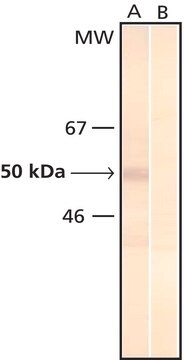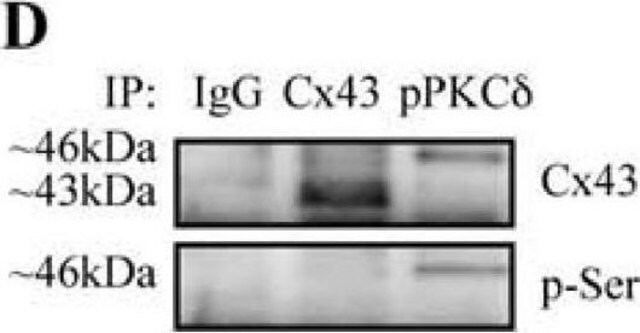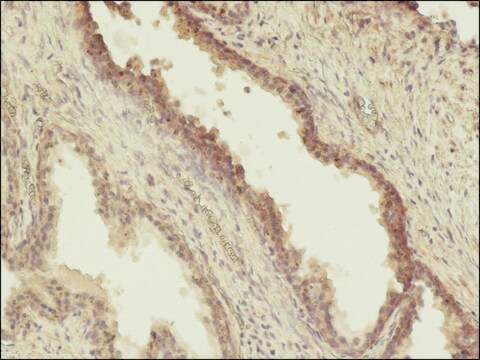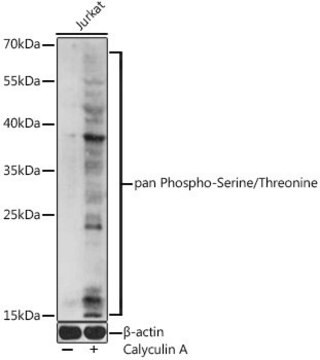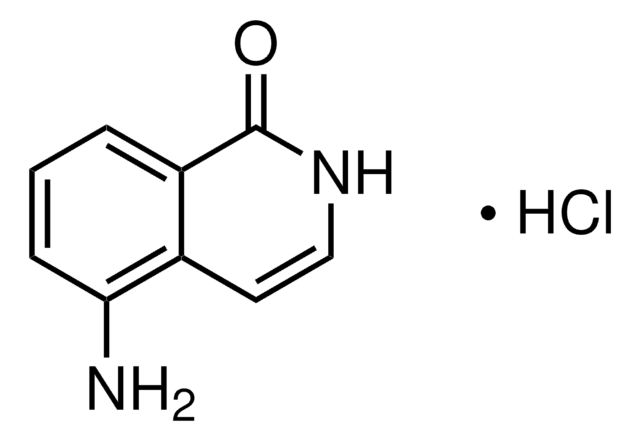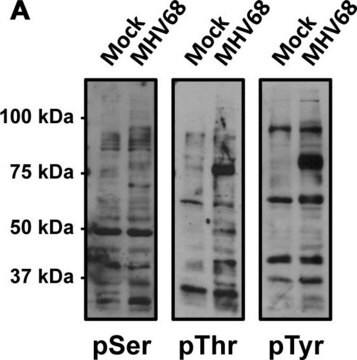Wichtige Dokumente
A8076
Monoklonales Anti-Phosphoserin
clone PSR-45, purified immunoglobulin, buffered aqueous solution
Synonym(e):
Phospho Ser, Phospho−Ser, Phospho−serin, Phospho-serin
About This Item
Empfohlene Produkte
Biologische Quelle
mouse
Qualitätsniveau
Konjugat
agarose conjugate
Antikörperform
purified immunoglobulin
Antikörper-Produkttyp
primary antibodies
Klon
PSR-45, monoclonal
Form
buffered aqueous solution
Methode(n)
immunoprecipitation (IP): suitable
Isotyp
IgG1
Versandbedingung
wet ice
Lagertemp.
2-8°C
Posttranslationale Modifikation Target
unmodified
Suchen Sie nach ähnlichen Produkten? Aufrufen Leitfaden zum Produktvergleich
Verwandte Kategorien
Allgemeine Beschreibung
Spezifität
Immunogen
Anwendung
Biochem./physiol. Wirkung
Monoclonal Anti-Phosphoserine may be used for the identification of proteins containing phosphorylated serine both as the free amino acid or when conjugated to carriers such as BSA or KLH. It does not react with non-phosphorylated serine, phosphorylated tyrosine or threonine, AMP or ATP.
Physikalische Form
Haftungsausschluss
Sie haben nicht das passende Produkt gefunden?
Probieren Sie unser Produkt-Auswahlhilfe. aus.
Lagerklassenschlüssel
10 - Combustible liquids
WGK
WGK 3
Flammpunkt (°F)
Not applicable
Flammpunkt (°C)
Not applicable
Hier finden Sie alle aktuellen Versionen:
Besitzen Sie dieses Produkt bereits?
In der Dokumentenbibliothek finden Sie die Dokumentation zu den Produkten, die Sie kürzlich erworben haben.
Artikel
Post-translational modifications such as glycosylation, phosphorylation, and sulfation, to name a few, serve many functions. As a result, the analysis of proteins and their post-translational modifications is particularly important for the study of diseases where multiple genes are known to be involved, such as heart disease, cancer and diabetes.
Unser Team von Wissenschaftlern verfügt über Erfahrung in allen Forschungsbereichen einschließlich Life Science, Materialwissenschaften, chemischer Synthese, Chromatographie, Analytik und vielen mehr..
Setzen Sie sich mit dem technischen Dienst in Verbindung.